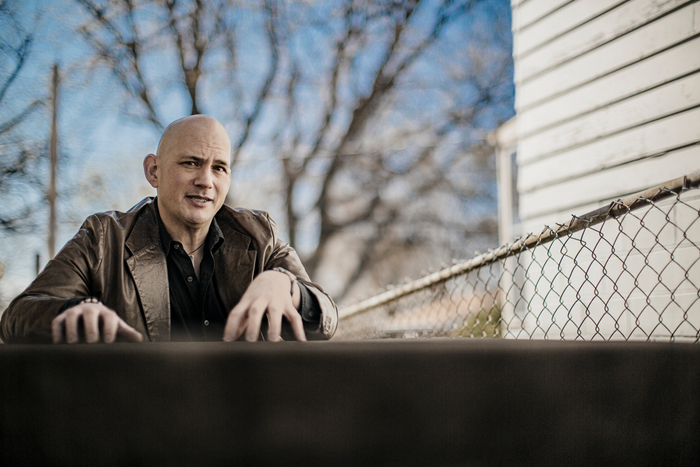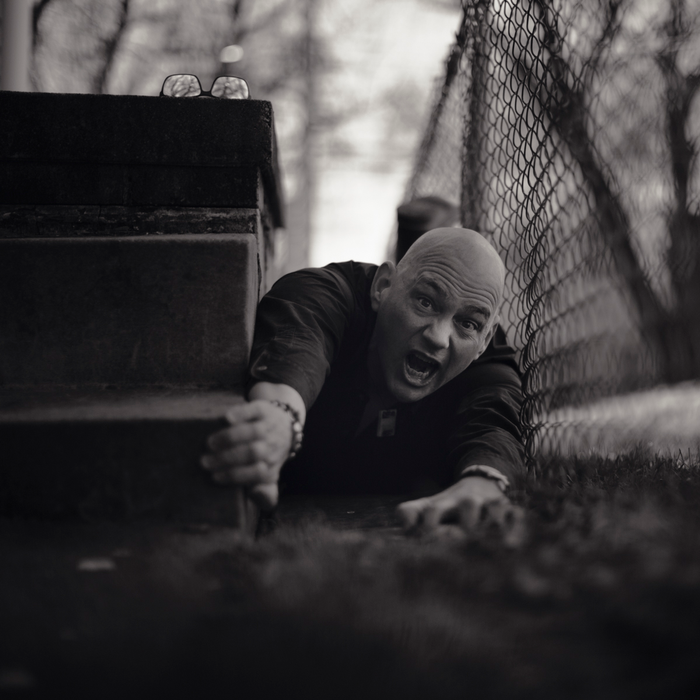Tim Siragusa is equally at home amid the theatrics of the stage as he is in the confines of restaurant dining rooms and kitchens. Like many a thespian, the actor-playwright-director has long made ends meet waiting tables and washing dishes. He was a popular server at the Boiler Room. When not choreographing front of house service, he may be performing at Bluebarn Theatre or The Rose.
Tim Siragusa is equally at home amid the theatrics of the stage as he is in the confines of restaurant dining rooms and kitchens. Like many a thespian, the actor-playwright-director has long made ends meet waiting tables and washing dishes. He was a popular server at the Boiler Room. When not choreographing front of house service, he may be performing at Bluebarn Theatre or The Rose.
With his background in acting he could charm any table. It was almost as if dinner service was another performance for him,” said Boiler Room executive chef Tim Nicholson. “[He was] always dressed for the part and ready for the show. He had several regular tables that would come back time and time again to have him make their dining experience special.”
An Omaha Creighton Prep and Creighton University graduate, Siragusa is also a published journalist, essayist, short story writer, and poet. As a visual artist, he’s made internationally exhibited mail art [a populist artistic movement centered on sending small scale works through the postal service], done art photography, and created jewelry. Before the COVID-19 scare closed restaurants, he worked at Acadian Grille in Dundee.
After years going on creative tears and suffering bouts of depression, he’s reassessing. This self-reflective gesture predates the winter-spring health crisis with its quarantine strictures that left many workers unemployed.
“At present, I see myself as someone who has stepped back in order to recharge my batteries,” he said. “I don’t have any paint on my fingers, I closed my studio, I gave away all my drawing pads and tools. I don’t audition. I don’t have a script in my bag, I am strictly taking stuff in right now.”
He senses revitalization on the horizon.
“Occasionally you’re at crisis points. It means things are going to change really quickly and you better be ready for it,” Siragusa said.

Though an extrovert when orchestrating table service or enacting a part on stage, he’s an introvert by nature.
“I’m perfectly happy talking to 500 people in telling them a story,” Siragusa said. “In reality, I’d rather just be by myself with a book. The arts life is very isolating. There’s me, and that’s about it.”
If nothing else, Siragusa knows himself. Enneagram tests confirm his core traits. “I have high creativity, high intelligence. I’m able to make big decisions and learn things very quickly. I have all these different skills. I’ve been called a chameleon. I can be anything I need to be in an hour.” He chalks up the fact that all that has translated into “low income, low social status” to “how the world works.”
While his sarcasm and impulsivity burn bridges, his authenticity and generosity earn the trust of fellow theater geeks and foodies.
Teri Fender acted alongside him on Siragusa’s original musical Psychobilly Jamboree.
“Tim was and is wildly creative and hilariously funny. You never really know what medium Tim will be working in next, but you can always be sure it will be like nothing else you have ever seen,” Fender said. “Mostly, Tim has been a loyal and caring friend.”
Former collaborator Jill Anderson calls him “one of the sharpest and most off-the-wall creatives I have ever known.” She admires his “subversive style” and wicked sense of humor.
“His presence in a room is similar to that of Oscar Wilde—the celebrated wit of any occasion,” Anderson said.
Then there’s Siragusa’s big heart.
“If a dishwasher was having a rough go at life,” Nicholson says, “it was not uncommon for Tim to present him new shoes.”
“One of the qualities many arts people have is high empathy,” said Siragusa, who grew up poor and knows firsthand the challenges of working low-wage jobs and hustling for tips.
“Some of my favorite people are those who got their GED and had a kid when they were in high school. Those are my tribe.”
In his art, Siragusa doesn’t presume being a social conscience.
“It is not the artist’s job to tell people how to live their lives,” he said. “A real pitfall is pretending you have received the plate of liberal ideas from the heavens to impart to the masses.”
He enjoys the “autonomy” visual art affords, though its creation depends on pricey supplies. Writing is more economical. “The nice thing about writing is that it doesn’t take a lot of resources,” he says. “You can just do it, and you can put your writing out on the web.” Finding a voice and an audience is another matter. “Writing is one of those things where you have to just keep punching at the wall and hope you break through.”
“One of my real passions is supporting the Omaha Public Library. Every month [patrons] can suggest five purchases, and I always go to indie publishers and young writers. If you can give some writer your attention for the span of one short story, then you’re bringing things forward and helping support the arts. That’s important to me.”
There is an art to serving food patrons he takes seriously.
“I’m able to use my theater skills to motivate a crew. A fine-dining table service looks like a dance—everyone’s cooperating and moving in rhythm, silently communicating. I’ve trained a lot of servers. I train them on being attuned to whatever patrons need.
“Making diners feel comfortable—have a seat, take a load off—is something constant.”
He’s sensitive to the marginal place many food workers occupy.
“Some don’t speak English. Some are undocumented. Nobody has insurance. If someone injures himself on the job, you can’t send him to the emergency room for stitches. Not everybody is in work situations where it gets real like that.”
Compensating for the long hours is getting paid in cash. “That is addictive,” he said. Flexible schedules allow taking off weeks for a project.
Just as most Omaha chefs don’t have the pressure of a national eye on then, he says the same is true for most Omaha artists, “and it’s very freeing.”
“Omaha has something else valuable to artists—abundant, low cost space where you can work, like the Hot Shops, which is a hidden gem. It’s been integral in my identity.” He moved his practice of mixed media-collage mail art from home to there.
He hit upon mail art when things slowed in theater. “The slings and arrows of the theater world often mean not getting the gig,” he said, “You will go insane trying to figure out why.” He sent or delivered postcards to theater friends, family, and old college chums.
The studio he kept for 16 years served as a salon for art, education, yoga, discussion, rehearsal, chilling out, and community.
Siragusa remains here in part due to “the cultural transformation Omaha’s gone through,” adding, “Omaha was not just a boring place to live up until about 15 years ago, but s----y.” He embraces the things that have created a more livable, dynamic burg.
In this precarious time, he’s confident he will thrive again. “I know how to tell stories and I can do it at another point when I want to.”
This article first appeared in the June 2020 issue of Omaha Magazine.












